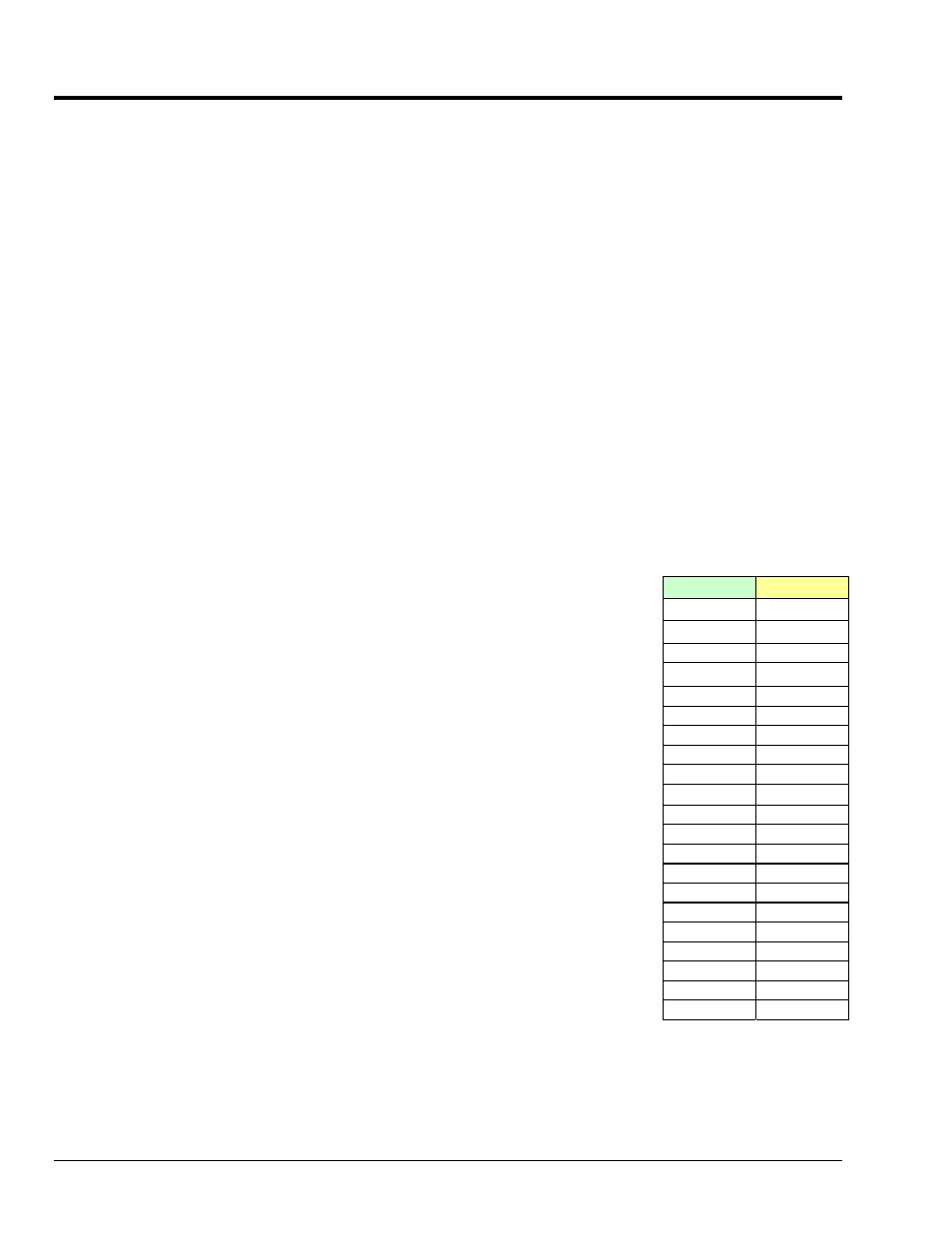Low-pass anti-aliasing filter, Low-pass anti-aliasing filter …… 6-4, What is aliasing – Measurement Computing ZonicBook 618E rev.3.4 User Manual
Page 52: Aliasing protection

6-4 Analog Signals
878595
ZonicBook/618E
Low-Pass Anti-Aliasing Filter
Each of the 8 channels has its own low-pass filter to provide alias protection and to allow for the removal of
undesired frequencies from the measured response.
What is Aliasing?
Aliasing is a phenomenon of sampled data systems wherein a high frequency signal is misrepresented as a low
frequency signal when the A/D converter sampling rate being used is too slow. This misrepresentation can result in
severe data corruption and incorrect FFT results. Aliasing is a well-documented data acquisition effect, and
interested users are encouraged to research detailed information that is available on-line from companies such as
Analog Devices and Texas Instruments. This text aims to not supplant those resources, but to provide most users
with sufficient knowledge to avoid most aliasing problems through proper filter and sampling rate configuration.
For a given sampling rate, F
S
, input signals of frequency up to F
S
/2 will be processed correctly. However, input
signals above F
S
/2 are subject to aliasing. For example, a sampling rate of 100 kHz can process signals up to 50
kHz without aliasing. An input signal of 90 kHz, however, will be aliased. Specifically, it will appear in the
sampled data as a signal of frequency F
S
-F
IN
, which in this case is
100 kHz-90 kHz = 10 kHz.
Aliasing, and its prevention, should be a consideration in all sampled data systems. This is especially important in
mechanical vibration measurements, because most mechanical systems exhibit a resonance apart from their
fundamental frequency. That is, there may be signal energy present that has the potential to be aliased that is
unknown to the user. And the worst part of aliasing is that its effects are indistinguishable from real input signals.
That is, in the given example, it is not apparent to the user whether the 10 kHz energy is real or an alias.
Aliasing Protection
F
IN
/F
C
Gain (dB)
<0.1 -0.15
0.1 -0.15
0.2 -0.18
0.3 -0.22
0.4 -0.27
0.5 -0.33
0.6 -0.39
0.7 -0.47
0.8 -0.68
0.9 -1.4
1.0 -3.6
1.25 -16
1.5 -28
1.75 -39
2.0 -48
2.5 -63
2.8 -70
3.0 -75
3.3 -80
3.5 -86
ZonicBook/618E’s conditioning circuit provides alias rejection via the unit’s
8-pole low pass filter. This filter has an extremely steep roll-off
characteristic, very closely achieving an ideal “brick-wall” response. It
consequently passes frequencies of interest without significant attenuation,
but significantly attenuates frequencies just above. Its attenuation is so high
that most alias frequency energy is reduced to a level below the noise floor of
the measurement system. However, it must be configured correctly to
achieve these results. In general, the cutoff frequency (F
C
) of the filter
should be set as close to, but above, the highest input frequency of interest.
This will maximize the alias rejection it provides.
The 8-pole filter provides excellent filter response. However, no filter is
perfect, meaning that some signal attenuation occurs for frequencies just
below F
C
and maximum attenuation is not exhibited for frequencies just
above F
C
.
For reference, the typical response of the 8-pole filter is provided in the table
at the right and the graphs that follow.
4.0 -95